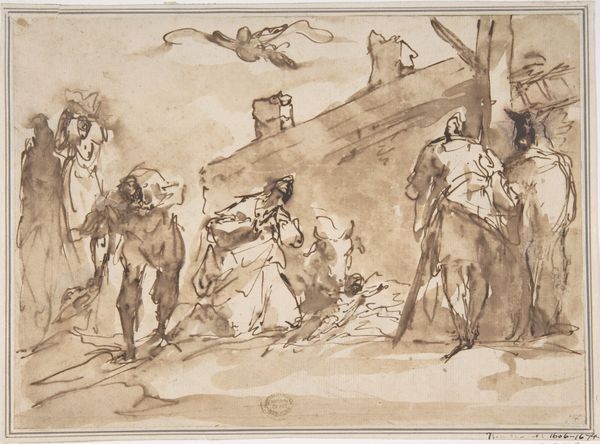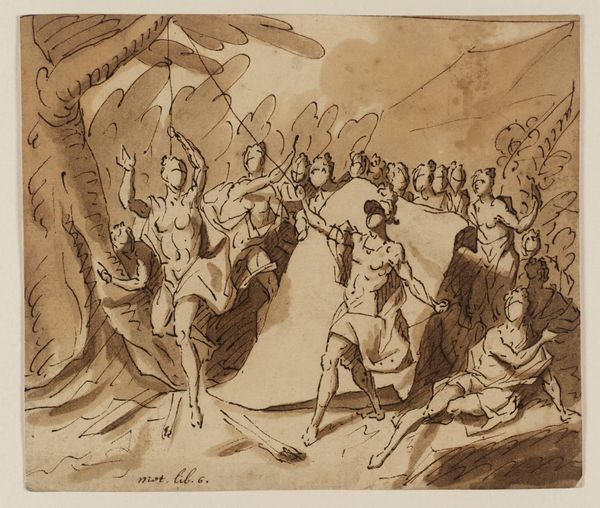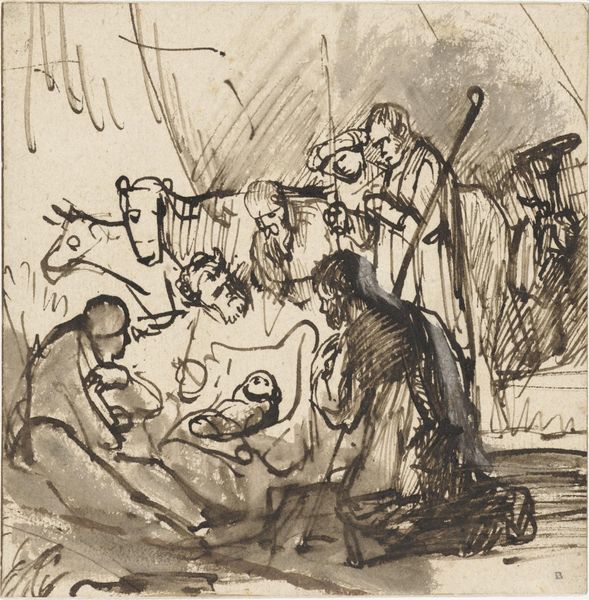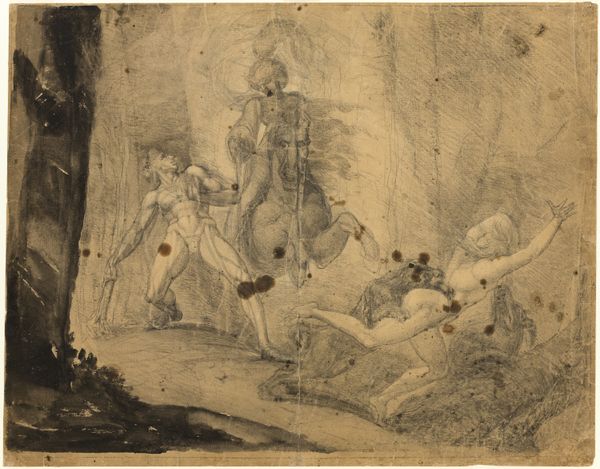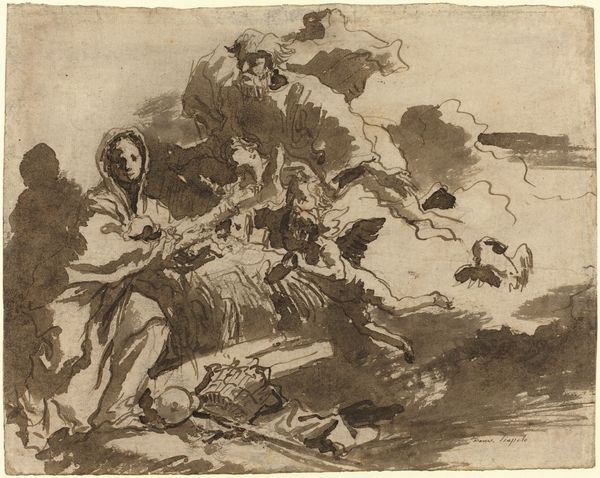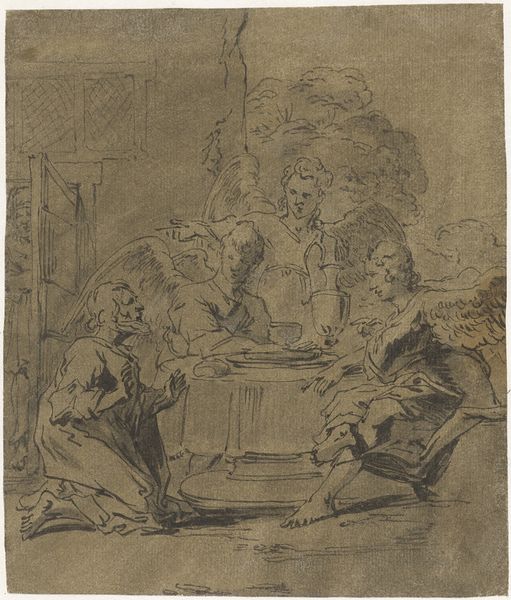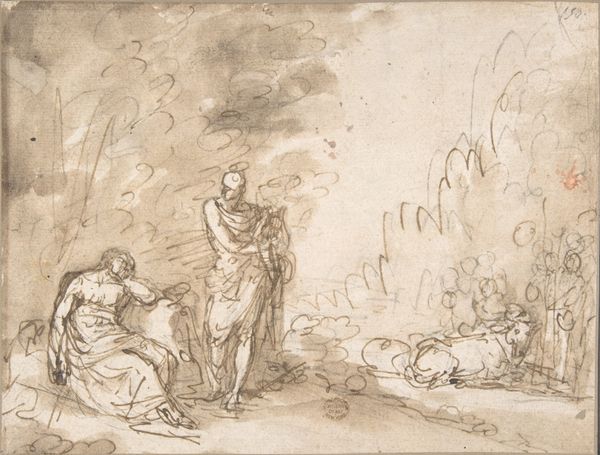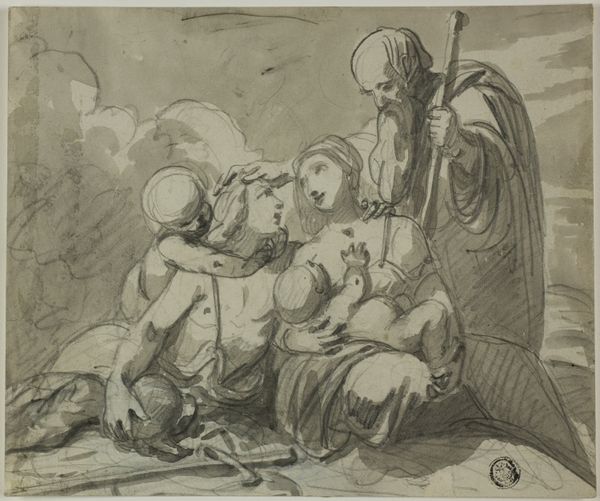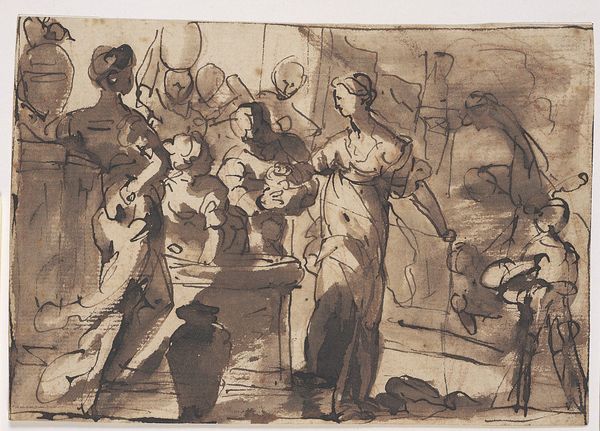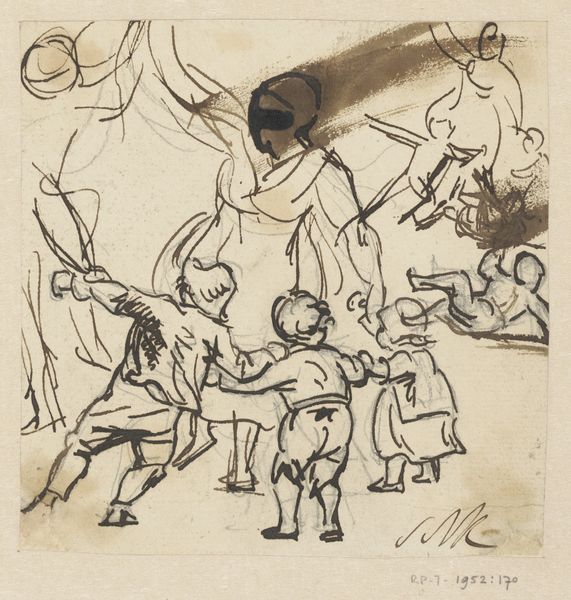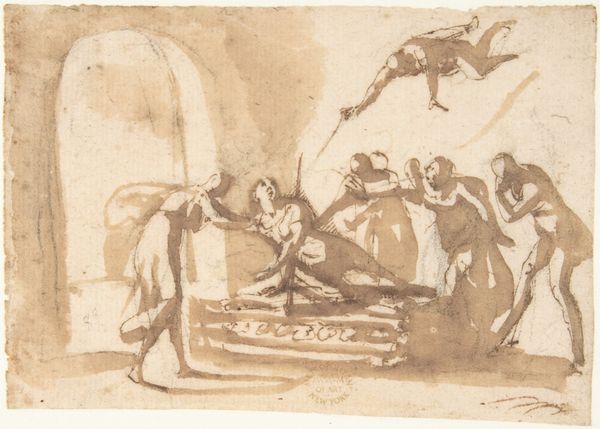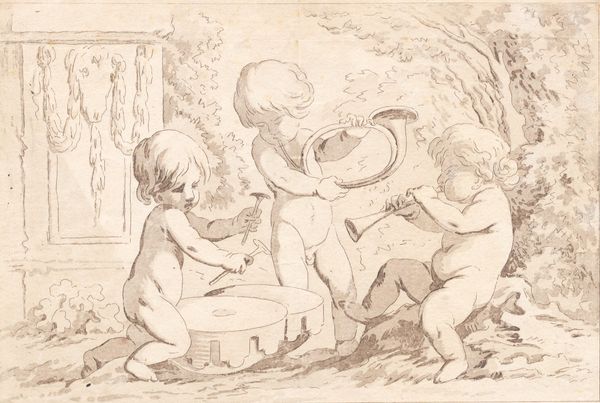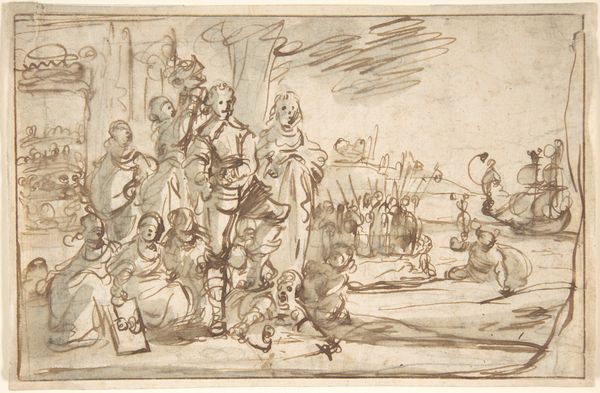
drawing, paper, ink, pen
#
drawing
#
ink painting
#
landscape
#
charcoal drawing
#
paper
#
ink
#
romanticism
#
pen
#
genre-painting
#
history-painting
#
nude
Dimensions: 149 × 166 mm
Copyright: Public Domain
Curator: This drawing, called "Nymphs and Satyrs Playing Musical Instruments," is by Claude Lorrain. While undated, it's a beautiful example of his work in ink, pen, and paper, currently held at the Art Institute of Chicago. What catches your eye? Editor: Initially, I'm struck by its hazy atmosphere and the clear erotic undertones of the reclining nude set amongst what look like musical revelers. It feels… charged. Is this intentional? Curator: Lorrain’s landscapes often evoke an Arcadian Golden Age, looking back to classical mythology. Here, the figures and the music-making contribute to a narrative tradition, hinting at a kind of erotic escapism within the confines of a cultivated elite audience of his time. It's about pleasure and refined leisure, painted with almost frenetic, quick brushstrokes. Editor: It's a fascinating insight. But beyond the 'Golden Age,' how does Lorrain engage with power dynamics of the male gaze with the female body laid bare in plain sight? Are we, the viewers, meant to participate in this scenario? And also, who gets to participate, even indirectly? Curator: These are pressing points to consider when we analyze the historical consumption of images like these, and who and what were they designed to gratify in its historical context. During this era, idealized depictions of female figures often circulated among privileged male elites as demonstrations of aesthetic taste and erotic capital. This can perpetuate systemic biases regarding gender, power, and agency within visual culture. Editor: Exactly. This invites us to reflect on the continued presence of historical injustices, raising complex questions about representation, desire, and societal norms. The fact that this work is presented for viewing to anyone begs for accountability, prompting an ongoing inquiry into art’s ability to confront power imbalances and social values. What could the value of an artwork like this one be, today? Curator: I suppose that for today's audiences it can prompt dialogues and foster a greater sensitivity toward representational challenges related to this and other genre paintings and landscapes. As an art piece it invites us to scrutinize the systems and power relations through which artworks acquire significance, and also as a form of societal preservation it helps us question the norms, standards and conventions in art-making processes that often went unchecked during the artwork’s own period. Editor: So it is by deconstructing these imageries that we open avenues for inclusivity. In turn, we create a platform that allows other narratives that have historically been overlooked and silenced. It creates an open space for debate, I hope.
Comments
No comments
Be the first to comment and join the conversation on the ultimate creative platform.
